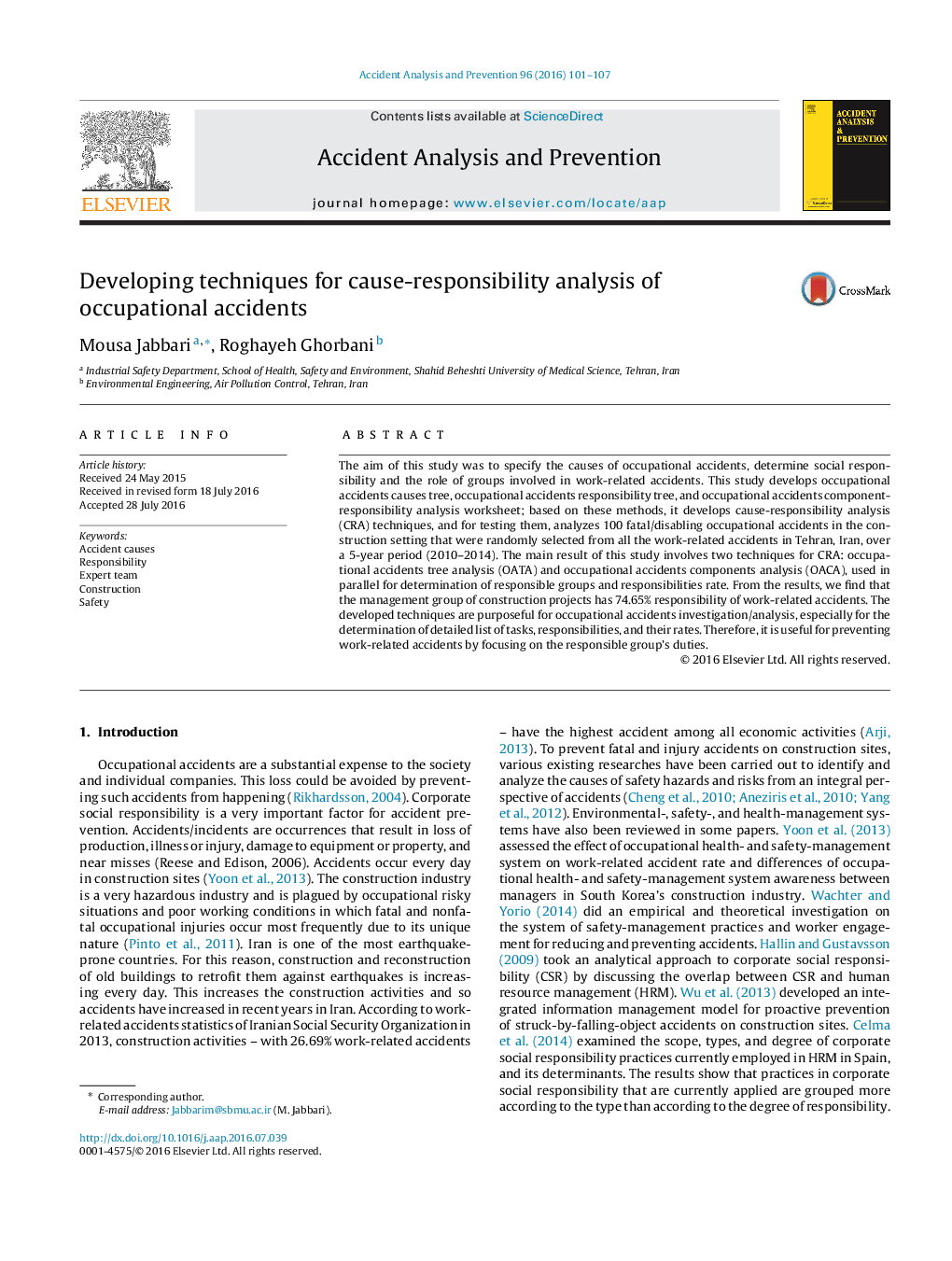| Article ID | Journal | Published Year | Pages | File Type |
|---|---|---|---|---|
| 571890 | Accident Analysis & Prevention | 2016 | 7 Pages |
•General and special procedures have been presented for investigating and analyzing occupational accidents.•Two techniques were developed as cause-responsibility analysis (CRA) techniques namely OATA technique and OACA technique.•The use of such techniques is shown by means of a case study.
The aim of this study was to specify the causes of occupational accidents, determine social responsibility and the role of groups involved in work-related accidents. This study develops occupational accidents causes tree, occupational accidents responsibility tree, and occupational accidents component-responsibility analysis worksheet; based on these methods, it develops cause-responsibility analysis (CRA) techniques, and for testing them, analyzes 100 fatal/disabling occupational accidents in the construction setting that were randomly selected from all the work-related accidents in Tehran, Iran, over a 5-year period (2010–2014). The main result of this study involves two techniques for CRA: occupational accidents tree analysis (OATA) and occupational accidents components analysis (OACA), used in parallel for determination of responsible groups and responsibilities rate. From the results, we find that the management group of construction projects has 74.65% responsibility of work-related accidents. The developed techniques are purposeful for occupational accidents investigation/analysis, especially for the determination of detailed list of tasks, responsibilities, and their rates. Therefore, it is useful for preventing work-related accidents by focusing on the responsible group’s duties.
